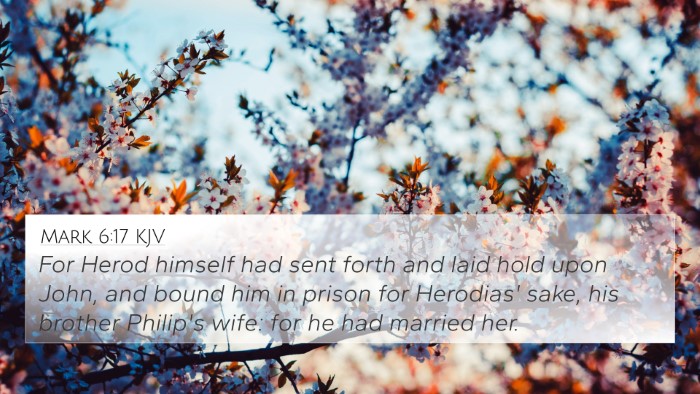Understanding Matthew 14:6
Bible Verse: Matthew 14:6
In this verse, we see a pivotal moment in the narrative surrounding the beheading of John the Baptist. It provides insights into the complex interplay of power, manipulation, and the consequences of one's actions within a royal context.
Summary of Matthew 14:6
Matthew 14:6 states, "But when Herod's birthday was kept, the daughter of Herodias danced before them and pleased Herod." This verse sets the stage for a tragic turn of events. The celebration of Herod's birthday becomes a backdrop for a significant moral and ethical conflict.
Thematic Analysis
- Royal Indulgence: The opulent nature of Herod's feast reflects the decadence of his reign.
- Manipulation and Influence: The dance of Herodias' daughter illustrates how individuals can manipulate circumstances to achieve their desires.
- Consequences of Actions: The pleasing of Herod sets the stage for the consequential beheading of John the Baptist, highlighting the deadly outcomes of unchecked desires and promises.
Commentary Insights
Matthew Henry's Commentary
Matthew Henry outlines that this incident displays the corrupting nature of power and how it leads to destructive decisions. Herod's birthday celebration becomes a platform for tragic decisions fueled by lust and pride. Henry notes that although Herod is pleased, his pleasure leads to violence against God's messenger.
Albert Barnes' Commentary
Albert Barnes emphasizes the character of Herod and the influence of women in this narrative. He points out that Herod acts foolishly under the pressure of those around him, showcasing the consequences of allowing others' expectations to drive one's decisions. This event also underscores the tragic use of authority to satisfy wanton impulses.
Adam Clarke's Commentary
Adam Clarke provides a deeper psychological interpretation, suggesting that Herod's decision-making was heavily influenced by the opulence of the event and the joy of the moment. Clarke notes the critical role of Herodias' daughter, whose dance, while seemingly innocent, was laden with manipulation and ulterior motives.
Cross-References and Related Verses
Matthew 14:6 resonates with several other Bible verses, highlighting its themes of authority, morality, and the consequences of human actions. Below are some pertinent cross-references:
- Mark 6:21-28 - This passage provides a parallel account of John's beheading and offers additional details.
- Luke 3:19-20 - This verse elaborates on John the Baptist's imprisonment due to his denunciation of Herod's actions.
- James 1:14-15 - Discusses how desires can lead to sin, paralleling the temptation Herod faced.
- Proverbs 29:2 - Illustrates how rulers can become corrupt, reflective of Herod's kingdom.
- Acts 12:1-2 - Discusses the fate of followers of John the Baptist and echoes the theme of persecution by rulers.
- Ecclesiastes 8:5-6 - Reflects on the potential consequences of authority and governance.
- Matthew 27:19 - Affects understanding of the pressures on rulers when making decisions about life and death.
Connecting Themes Across Scriptures
In analyzing Matthew 14:6, we find various connections to broader biblical themes, enhancing our understanding of scriptural narratives:
- Authority and Morality: The decisions of leaders often carry significant moral weight, evident in both Herod's actions and the implications they have for John the Baptist.
- Consequences of Sin: The repercussions of yielding to temptation are clearly illustrated here, as seen in Herod's life choices.
- The Role of Women in Scripture: Herodias' daughter's dance represents the complexities of female agency and manipulation within biblical narratives.
Conclusion
Matthew 14:6 holds a crucial place within the narrative of the Gospels, providing insights into the nature of power, human desire, and moral integrity. By examining this verse with resources and commentaries by Matthew Henry, Albert Barnes, and Adam Clarke, alongside cross-references, we can deepen our understanding of the scripture and its relevance. Utilizing tools for Bible cross-referencing enhances our approach to studying not just this verse, but the interconnectedness found throughout the Biblical texts.












